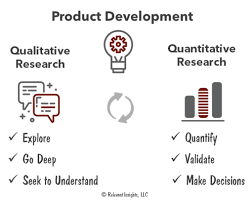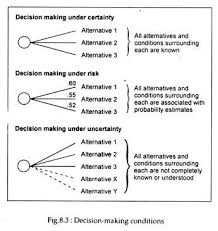What are the 8 most commonly asked questions about types of managerial decision making?
- What are the different types of managerial decision making?
- How do managers make decisions?
- What is the difference between rational and intuitive decision making?
- How can managers use data to inform their decisions?
- What are some common pitfalls in decision making?
- How can managers ensure that their decisions are effective and efficient?
- What techniques can be used to improve decision-making processes?
- How does group decision-making differ from individual decision-making?
What are the different types of managerial decision making?
- Programmed Decision Making: This type of decision making involves decisions that are relatively routine and repetitive. These decisions are made using predetermined rules, procedures, or guidelines.
- Non-Programmed Decision Making: This type of decision making involves decisions that are more complex and require more analysis. These decisions are usually made in response to unique or unpredictable situations.
- Strategic Decision Making: This type of decision making involves long-term planning and goal setting for an organization. It involves analyzing the environment, setting objectives, and implementing strategies to achieve those objectives.
- Tactical Decision Making: This type of decision making involves short-term planning and goal setting for an organization. It involves analyzing the current situation, developing plans to achieve short-term goals, and implementing those plans quickly and efficiently.
- Operational Decision Making: This type of decision making involves day-to-day operations within an organization. It includes making decisions related to personnel management, budgeting, scheduling, customer service, etc.
How do managers make decisions?
Managers make decisions by analyzing data, weighing options, considering the risks and rewards of each option, and making a decision that will best meet the goals of the organization. They may consult with other managers or staff members to gain additional insight into the situation and to ensure that all voices are heard. Managers may also use decision-making tools such as decision trees or cost-benefit analyses to help them make informed decisions.
What is the difference between rational and intuitive decision making?
Rational decision making is a process that involves gathering information, analyzing it, and making decisions based on facts and logic. Intuitive decision making is a process of making decisions based on gut feeling or intuition. It relies on instinct, experience, and judgment rather than facts and logic.
How can managers use data to inform their decisions?
Data can be used by managers to inform decisions in a variety of ways. For example, data can be used to identify trends and patterns in customer behavior, evaluate the success of marketing campaigns, measure employee performance, inform decisions on product development and pricing, and analyze the effectiveness of operational processes. Data can also be used to identify areas for improvement and develop strategies for achieving desired outcomes. By leveraging data-driven insights, managers can make more informed decisions that are better aligned with organizational goals.
What are some common pitfalls in decision making?
- Overconfidence: Having too much confidence in your own judgment can lead to bad decisions.
- Groupthink: When a group of people reach a consensus without considering all options or exploring alternative viewpoints, it can lead to poor decision-making.
- Anchoring: When you rely too heavily on one piece of information or one perspective, it can lead to biased decisions.
- Confirmation Bias: When you seek out evidence that confirms your existing beliefs, rather than considering alternative perspectives, it can lead to faulty decision making.
- Short-term Thinking: Focusing on the immediate rewards and benefits of a decision without considering the long-term implications can have negative consequences down the line.
- Not Seeking Expert Advice: Not consulting experts or seeking outside advice when making a decision can limit your perspective and lead to bad decisions.
How can managers ensure that their decisions are effective and efficient?
- Set clear goals and objectives: Establishing clear and measurable objectives helps ensure that decisions are made in line with the organization’s overall mission and goals.
- Analyze data: Collecting and analyzing data can help managers make informed decisions that are based on facts rather than assumptions.
- Involve stakeholders: Involving key stakeholders in decision-making processes helps ensure that all perspectives are taken into account when making decisions.
- Consider risks: Assessing potential risks before making a decision can help managers avoid costly mistakes or unforeseen consequences.
- Evaluate outcomes: Regularly evaluating the outcomes of decisions helps managers identify areas for improvement and refine their decision-making processes over time.
What techniques can be used to improve decision-making processes?
- Gathering and analyzing data: Gathering and analyzing data can help decision makers to identify trends, uncover insights, and make more informed decisions.
- Brainstorming: Brainstorming sessions can help decision makers to generate ideas, consider different perspectives, and come up with creative solutions.
- Collaboration: Collaboration with peers, colleagues, and other stakeholders can help decision makers to gain a better understanding of the situation and develop more effective solutions.
- Using checklists: Checklists can help decision makers to ensure that all relevant information is considered before making a decision.
- Seeking advice: Seeking advice from experts or mentors can provide valuable insights that may not be available otherwise.
- Creating options: Creating multiple options for consideration can provide decision makers with a range of alternatives to choose from, helping them make the best possible choice.
- Timeboxing: Setting time constraints on the decision-making process can help to reduce analysis paralysis and encourage quicker decisions that are based on available information rather than perfect information.
How does group decision-making differ from individual decision-making?
Group decision-making involves multiple people coming together and discussing different ideas, perspectives, and solutions to a problem or issue. This allows for more diverse opinions and ideas to be heard, which can lead to better solutions. Group decision-making also allows for more collaboration and discussion, which can help build consensus. Individual decision-making is a process in which one individual makes a decision without consulting anyone else. This process may be faster, but it can also lead to decisions that are not well thought out or based on limited information.




